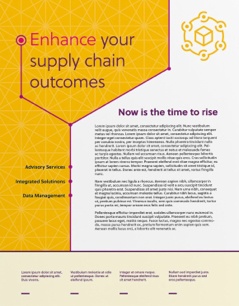 New year, new rules. In 2018, hospitals will receive significantly reduced drug manufacturer rebates from the 340B program, which currently provides drugs at discounted rates to providers serving large low-income or vulnerable patient populations. The federal program, which is responsible for nearly 8 percent of outpatient branded drug sales, will be cut by $1.6 billion in the aggregate.
New year, new rules. In 2018, hospitals will receive significantly reduced drug manufacturer rebates from the 340B program, which currently provides drugs at discounted rates to providers serving large low-income or vulnerable patient populations. The federal program, which is responsible for nearly 8 percent of outpatient branded drug sales, will be cut by $1.6 billion in the aggregate.
Obviously, this isn’t great news for covered entities enrolled in the program; many rely on savings from the program to reduce the overall supply cost. As a result, hospital groups filed a lawsuit against CMS over the changes, stating that the widespread impact could be catastrophic. However, on Dec. 29, 2017, a federal judge dismissed the lawsuit, allowing CMS to move forward with the cuts.
Fortunately, there are options that exist outside of the courtroom. Below are four proactive ways for hospitals to offset the impact to their bottom line.
1. Improve labor management with predictive analytics.
By leveraging predictive analytics, providers can improve patient outcomes and create efficiencies via hospital supply chain optimization. According to a study by the Society of Actuaries, 89% of providers either currently use predictive analytics or plan to begin in the next five years. This combination of patient data and clinical knowledge allows hospitals to forecast the likelihood of specific outcomes, ultimately taking a more personalized approach in delivering care. These tools help tailor treatments, spot trends, and predict negative patient outcomes, such as chronic disease, readmissions, and life-threatening infections.
Evidence-based care not only improves care delivery and patient outcomes, but also labor management and cost reduction. Better insight into staffing allows hospitals to align labor with demand and greatly decrease operational costs. With the ability to predict and prevent readmissions and infections, hospitals decrease spending and create a safer, more personalized environment for the patient.
2. Adopt alternative care delivery models.
The way that providers deliver care is evolving. With reimbursements now directly tied to quality measures, taking a patient-centered approach in delivering care is more important than ever. Value-based care models emphasize the importance of delivering high-quality, cost-effective healthcare. These programs focus on things like reducing adverse events, such as readmissions and hospital-acquired infections, as well as transitioning to value-based purchasing and investment in community-wide health programs.
Accountable Care Organizations (ACOs) are another area of opportunity. These groups of doctors and hospitals come together to offer patients coordinated care, making sure that patients receive the right care at the right time, while avoiding duplicated services and medical errors. By voluntarily combining efforts and sharing risk, providers can offer higher-quality care at a lower operating cost.
Telehealth, the practice of remote patient treatment, has become increasingly popular due to low operational costs and the ability to treat patients who lack access to healthcare. In fact, forecasters anticipate that telehealth will serve over seven million patients in 2018, as providers continue to explore alternative care delivery models.
3. Develop an in-house compounding pharmacy.
Some healthcare providers decide to build their own in-house compounding pharmacies to combat rising drug costs. Internal/centralized compounding pharmacies reduce the total cost of compounded drugs through scale, including the cost of related materials such as IV bags or syringes. Furthermore, by building an in-house pharmacy, hospitals can reduce back orders through more efficient supply management. This can minimize errors and improve compliance, as well as optimize inventory levels to prevent drug shortages.
4. Optimize the pharmacy supply chain.
Through pharmacy supply chain optimization, hospitals can decrease drug costs, leveraging technology and data to establish better price management and inventory standardization. An infrastructure built around pharmacy automation and data-driven decisions provides real-time visibility into pharmacy purchasing, such as identifying medication quantities across hospital locations and anticipating future shortages. Automation can also improve processes and create efficiencies, eliminating cumbersome inventory management tasks that can result in human errors and unnecessary costs.
Many hospitals are turning to centralized drug distribution to improve cost management, eliminate redundancies, and streamline workflows. For example, hospitals may want to centralize pharmacy functions such as unit dose packaging and specialty drug programs. With the adoption of a consolidated service center strategy, supply chain professionals can better manage supply and demand, as well as identify purchasing trends based on medication patterns.
Are you concerned about the financial impact of the reduced 340B rebates on your hospital? To learn more about how you can identify cost savings and protect your hospital’s bottom line, contact RiseNow for a consultation.





